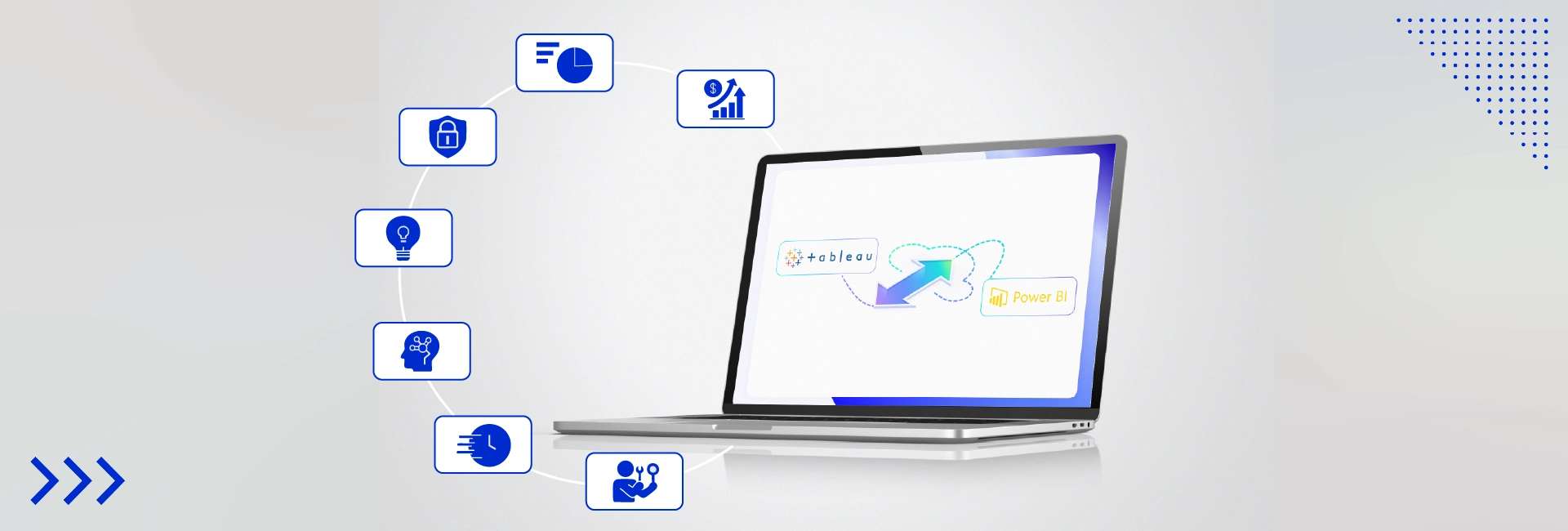For years, insurers and businesses have wrestled with the same nagging problems: inaccurate risk assessments, delayed underwriting, fraudulent claims, and generic pricing models that don’t reflect actual customer behavior. The reason? Manual processes and outdated systems with minimum scope for change frustrate both insurers and policyholders alike.
But, with the emergence of Artificial Intelligence (AI) and the Internet of Things (IoT), the insurance industry is getting more advanced and data driven. Now, businesses are able to provide more personalized services and round-the-clock services to customers. So, whether you want to increase efficiency by using AI in underwriting and risk management or utilizing IoT in insurance processes, these technologies help you reshape your entire workflow.
In this blog, we will help you understand the role of AI and IoT for effective risk management and underwriting. We will also cover the benefits of AI and IoT along with the future they hold in the insurance industry.
Reshaping insurance with AI in risk management and underwriting
AI is the flag bearer in this race for technological transformation. It helps insurers analyze data, automate repetitive administrative tasks, identify fraudulent activities, and make data-driven decisions with real-time insights.
1. Smarter AI underwriting
- AI doesn’t rely on static information like age or credit score.
- It digs deeper using machine learning to predict risk based on behavior, lifestyle, and even social patterns.
- Natural Language Processing (NLP) helps make sense of unstructured data—doctor’s notes, claims reports, or emails.
The result? More accurate risk profiles and fewer surprises down the line.
2. Speed and automation
- AI-powered tools can approve policies for low-risk applicants in minutes—no paperwork, no long wait times.
- Robotic Process Automation (RPA) helps in automating the routine tasks, like data entry and checking missing information in the records.
This allows businesses to let AI do its job and focus on running their operations smoothly.
3. Personalized coverage
- AI enables insurers to tailor policies to individuals, not broad categories.
- If you’re a cautious driver or a fitness enthusiast, your premium could reflect that.
With personalized services and products, customers’ behavior towards the insurer changes for the good, building trust and loyalty.
4. Detecting and preventing fraud
- Although AI is efficient enough to reshape your entire workflow, detecting and preventing is an icing on the cake. It helps in identifying inconsistent claims and conflicting information.
- Some insurers use AI to scan voice or text interactions to detect potential fraud in real time.
That means less money is lost to fraud and more resources are available for legitimate claims.
Reshaping insurance with IoT in risk management and underwriting
While AI thinks, IoT listens and watches. It’s all about collecting real-time data from devices in our homes, cars, and even on our wrists.
1. Real-time risk visibility
- Smartwatches and fitness trackers tell health insurers how active and healthy you are.
- Connected vehicles monitor driving behavior, speeding, sudden stops, and more.
- Smart home systems detect water leaks, fires, and break-ins.
By gaining all this real-time data, businesses can get a better understanding of what is really happening in the market and how it can affect their decision-making.
2. Usage-Based Insurance (UBI)
- Health insurers reward active lifestyles or biometric health data.
- Even property insurance can offer better rates if smart sensors show your home is well-maintained.
This turns insurance into something that adapts to your lifestyle, not just your demographic.
3. Preventing losses before they happen
- IoT devices can alert you and your insurer to risks before they cause damage.
- Think of water leak detectors that ping you before a pipe bursts or maintenance alerts in connected cars.
This proactive feature of IoT helps businesses save a lot of money and also saves customers from managing claims and damage.
4. Faster & smoother claims
- Data from IoT devices helps verify incidents and reduce disputes.
- Connected gadgets and appliances can help with faster claims management by providing the details of the event in a timely manner.
This enables businesses to process claims faster without any discrepancies and builds trust among policyholders.
Challenges insurers face while adopting AI and IoT
Even with all the innovation, rolling out AI and IoT in insurance comes with some real-world friction. Here’s a deeper look:
1. Data privacy and customer trust
The challenge: Customers are wary of how their data, especially health, location, or financial behavior, is used.- IoT devices collect sensitive, personal information.
- Customers may hesitate to share it unless they know exactly how it’s being used, stored, and protected.
What insurers need to do: To eliminate this misconception from customers’ minds, insurance agencies need to be more transparent, focus on cybersecurity, and maintain regulatory compliance.
2. High setup and integration costs
The challenge: Rolling out AI platforms and IoT networks isn’t cheap.
- Small or mid-sized insurers may lack the budget or technical expertise.
- Implementation requires not just new software, but also training, integration with legacy systems, and possibly new hardware (like sensors or telematics devices).
Possible solution: Start with cloud-based tools or partner with third-party AI/IoT service providers to reduce upfront costs.
3. Data overload and quality issues
The challenge: More devices simply means that more data is collected every day. If you segregate this data, most of it will be useless, meaning it will not help during the process, but you still need to keep it.
- From policy issuance to claims settlement, insurers collect immense data which does not even help in making actionable insights.
- If the quality of the data is poor, it can lead to flawed decision-making.
What insurers need to do: The best way to overcome this is by investing in filtration process and analytical tools to ensure that the data is relevant.
4. Customer resistance to change
The challenge: Not every customer is eager to be tracked 24/7.
- Some find IoT-based insurance models intrusive.
- Others may not fully understand how AI works and fear losing the “human touch” in underwriting and claims.
What insurers need to do: Educate customers. Show them the value of sharing data—like lower premiums, faster claims, and proactive alerts. Also, keep real people in the loop for high-touch cases.
The benefits of using AI and IoT together
With the combined power of IoT in AI in insurance underwriting and risk management, businesses are getting transformational results. Let’s understand how:
1. Real-time risk assessment
The benefit: Insurers no longer have to rely solely on old data or annual check-ins.
- IoT devices constantly feed live data from real-world environments, like your car, home, or even wearable health monitors.
- As AI process data in real-time, insurance agencies can keep track of risk all the time.
Why it matters: With time, the type of risks pertaining to policies and claims has changed and therefore, policy structures should change as well. With real-time data, insurers can provide accurate and fair policies to customers at dynamic prices.
2. Personalized pricing and coverage
The benefit: One-size-fits-all policies are becoming a thing of the past.
- AI uses data from IoT devices to understand individual customer behavior.
- Pricing is adjusted based on actual risk profiles—for example, safe drivers get lower premiums, and physically active individuals might get better health insurance rates.
Why it matters: Personalized pricing and coverage is a win-win for both insurers and customers. Here, customers feel like they are treated fairly, and insurers reduce the risk of underpricing or overpricing.
3. Faster decision-making
The benefit: With AI-powered automation, businesses can make decisions related to underwriting and risk management much faster.
- AI automates repetitive processes like data verification, eligibility checks, and fraud screening.
- Claims that once took days can be approved in hours if IoT data (e.g., from a dashcam or smart alarm) confirms the event.
Why it matters: Faster decisions improve customer satisfaction and reduce operational costs for insurers.
4. Proactive risk prevention
The benefit: Insurers can help customers avoid losses, not just cover them.
- By using data gathered from multiple IoT devices connected to each other, users can detect risks before it even happens.
- Different AI/ML models are capable of predicting potential risks and fraud and providing the most suitable solutions.
Why it matters: This enables insurers to be proactive and help customers as soon as possible while reducing overheads and building a strong relationship.
5. Fraud reduction
The benefit: AI’s pattern recognition capabilities drastically reduce fraudulent activity.
- It can detect inconsistencies in claim data or spot suspicious behavior patterns.
- As IoT can identify the exact location where the incident happened, it gets really hard to get away with any fraud.
Why it matters: As AI and IoT technologies can optimize fraud detection, businesses can utilize the saved resources to serve legitimate customers.
What the future looks like
With IoT and AI in insurance, businesses can definitely change the way they operate their workflow and provide great experience to customers. Here’s what the future of AI and IoT in insurance looks like:
1. Real-time, on-demand insurance
What if you need insurance just for a few hours, maybe during flights, traveling abroad, or even while driving? Here on-demand insurance can serve a short-term facility giving coverage at the time of crisis.
2. Fully digital claims with AI
No more paperwork. AI could handle claims from start to finish, using photos, IoT data, and predictive models.
3. Smart ecosystems
Insurers will partner with car manufacturers, wearable brands, and smart home companies to create seamless ecosystems—where your lifestyle is integrated with your insurance in real-time.
4. Better risk forecasting
As AI is known to have the ability of predictive analytics, with IoT, it is becoming more efficient and accurate. Collectively, AI and IoT can detect and prevent risks before they even happen.
Smarter insurance starts now
As already explained in detail, AI and IoT give insurers the ability to move from reactive to proactive, from generic to personalized, and from slow to lightning-fast. With the help of these technologies, insurance companies can:
- Accurately assess and price risk in real-time
- Prevent losses before they happen
- Deliver faster, fairer, and more transparent customer experiences
- Cut down on fraud and streamline operations
At FBSPL, we help insurance providers tap into the full potential of AI and IoT with tailored solutions that simplify underwriting, sharpen risk insights, and deliver standout customer service.
Let’s build smarter, safer, and faster insurance, together. Contact us today to learn more.





